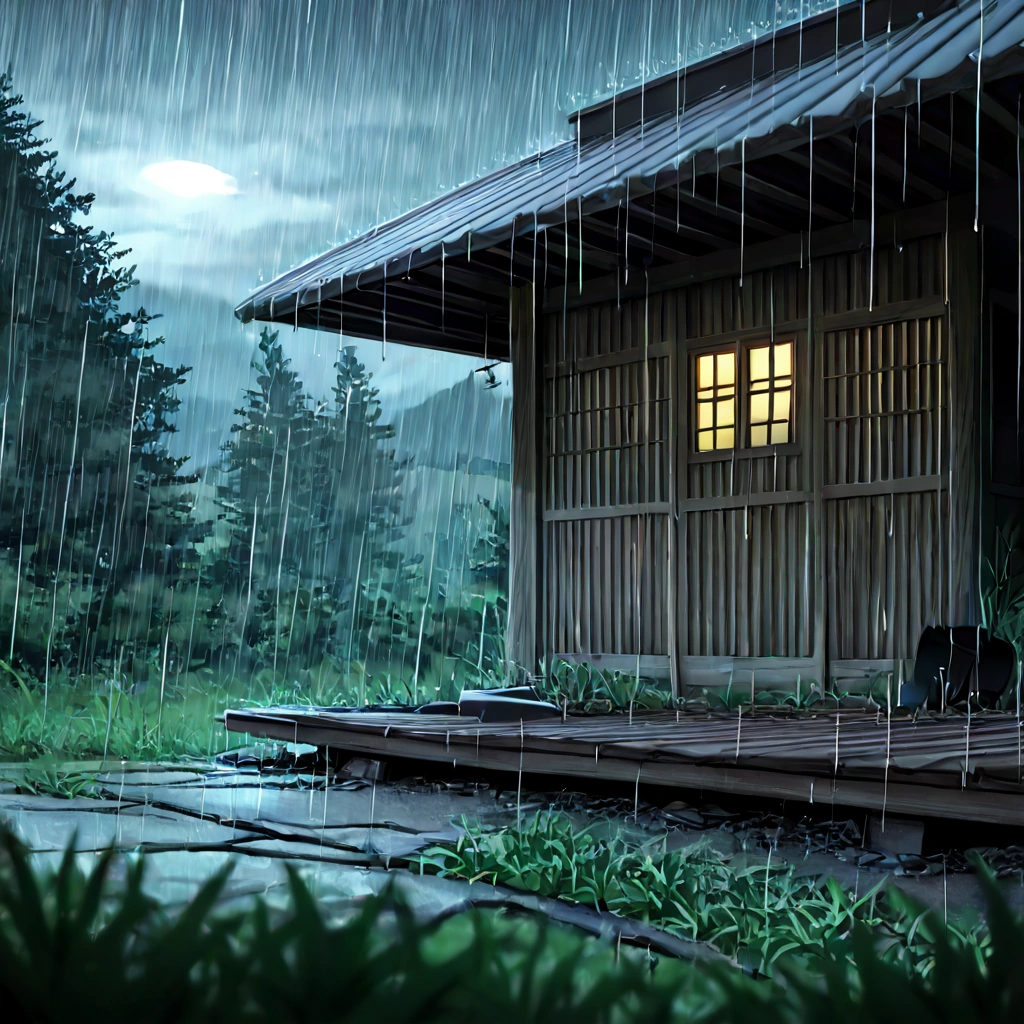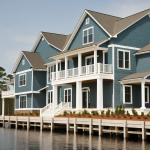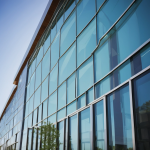Oregon Roofing & Siding: Costs, Lifespan & Best Materials for the Pacific Northwest
Oregon Roofing and Siding: A Homeowner’s Guide to Lifespan, Costs, and Efficiency
Oregon’s unique climate, characterized by relentless rain, fluctuating temperatures, and intense UV exposure, necessitates a strategic approach to roofing and siding. Selecting appropriate Oregon roofing materials and siding isn’t merely an aesthetic choice; it’s a critical investment impacting your home’s resilience, energy efficiency, and long-term property value. This guide provides homeowners with the knowledge to make informed decisions, balancing budget, aesthetics, and longevity, all while considering Oregon siding costs and roofing lifespan Oregon. We delve into popular choices like asphalt shingles, metal roofing, cedar siding, fiber cement siding, and vinyl siding, analyzing their performance against Oregon’s specific weather challenges.
Choosing the right materials directly translates to cost-effective exterior improvement strategies.
For instance, investing in durable metal roofing Oregon, despite its higher upfront cost, can significantly reduce long-term maintenance and replacement expenses compared to frequently replacing cheaper asphalt shingles Oregon. Similarly, understanding siding maintenance Oregon requirements for cedar can help homeowners budget for ongoing care or opt for lower-maintenance alternatives like fiber cement siding Oregon.
Understanding these trade-offs is key to maximizing value. This analysis draws insights from local Oregon contractors and references relevant building codes and best practices tailored to the Pacific Northwest. We aim to equip you with a clear understanding of each material’s strengths and weaknesses, empowering you to select options that not only enhance your home’s curb appeal but also provide lasting protection against the elements.
By considering factors like moisture resistance, UV resilience, and thermal performance, you can make informed choices that minimize long-term costs and maximize your home’s value in the face of Oregon’s demanding climate.
Asphalt Shingles: Balancing Affordability with Oregon’s Climate Demands
Asphalt shingles remain a popular choice due to their affordability and ease of installation. However, Oregon’s heavy rainfall can accelerate granule loss, leading to premature aging and potential leaks, a phenomenon particularly pronounced in the Willamette Valley. Expect a roofing lifespan in Oregon of 15-25 years, significantly shorter than in drier climates like Arizona. Upfront costs are the lowest among the options discussed, typically ranging from $3.50 to $5.50 per square foot installed. Long-term siding maintenance in Oregon, and roofing maintenance, involves periodic inspections, moss removal (a common issue in shaded areas), and potential repairs, adding to the overall cost.
Asphalt shingles offer moderate energy efficiency, reflecting some solar heat but not significantly reducing energy bills. Cost-benefit analysis: While initially inexpensive, the shorter lifespan and higher maintenance costs in Oregon’s climate can lead to a higher total cost of ownership compared to more durable options like metal roofing Oregon or fiber cement siding Oregon. When considering asphalt shingles Oregon, homeowners should carefully evaluate the specific type of shingle and its warranty. Architectural or dimensional shingles, while slightly more expensive upfront, often offer better wind resistance and a longer lifespan compared to traditional three-tab shingles.
Furthermore, proper installation is crucial; ensuring adequate ventilation in the attic space can help mitigate moisture buildup and extend the roof’s lifespan. Consulting with experienced Oregon roofing materials contractors who understand the regional climate nuances is highly recommended. They can advise on the best shingle options and installation techniques to maximize performance and longevity, ultimately impacting Oregon siding costs and roofing lifespan Oregon. From a climate-specific perspective, the impact of Oregon’s freeze-thaw cycles on asphalt shingles cannot be overstated.
Water absorbed into the shingle can freeze and expand, causing cracking and further granule loss. This is particularly relevant in areas like Bend or Medford, where temperature fluctuations are more extreme. Therefore, investing in higher-quality asphalt shingles with enhanced moisture resistance is a prudent strategy. Moreover, consider the long-term cost implications; while vinyl siding Oregon presents a lower initial investment, the increased durability of fiber cement or the extended lifespan of metal roofing might prove more cost-effective over time.
The choice of Oregon roofing materials should always be a balance between upfront cost and long-term performance, factoring in siding maintenance Oregon and potential repair expenses. Beyond material selection, proactive maintenance plays a vital role in extending the lifespan of asphalt shingles in Oregon. Regular cleaning to remove moss and algae growth is essential, as these organisms can trap moisture and accelerate deterioration. Furthermore, prompt repair of any damaged or missing shingles can prevent leaks and further structural damage. Homeowners should also be mindful of tree branches overhanging the roof, as falling debris can cause impact damage. By adopting a proactive approach to maintenance, homeowners can maximize the lifespan of their asphalt shingle roof and minimize the need for costly repairs or replacements, contributing to overall cost-effective exterior improvement strategies.
Metal Roofing: Durability and Energy Efficiency for the Long Haul
Metal roofing stands out as a premium, long-term solution for Oregon homeowners seeking unparalleled durability and energy efficiency. Particularly, standing seam metal roofs offer exceptional resistance to the Pacific Northwest’s challenging climate, boasting a lifespan of 40 to 70 years or even longer. This longevity stems from the material’s inherent ability to withstand heavy rain, snowfall, and intense UV radiation, all of which are common in Oregon. While the upfront costs, ranging from $9 to $16 per square foot installed, represent a significant investment compared to options like asphalt shingles Oregon, the extended lifespan and minimal siding maintenance Oregon translate to substantial long-term savings.
Choosing metal roofing is a strategic decision that considers the entire lifecycle cost, making it a fiscally responsible choice for those prioritizing long-term value. Beyond its robust physical properties, metal roofing offers significant energy-saving benefits, contributing to its growing popularity among environmentally conscious homeowners. Metal’s highly reflective surface deflects a considerable amount of solar heat, reducing the need for air conditioning during the warmer months and lowering overall energy consumption. This is especially advantageous in Oregon’s climate, where fluctuating temperatures can lead to high energy bills.
Furthermore, many metal roofing products are made from recycled materials and are fully recyclable at the end of their lifespan, aligning with sustainable building practices. Considering both energy savings and environmental impact, metal roofing represents a forward-thinking choice for Oregon residents. Local contractors are increasingly recommending metal options, citing homeowner demand for energy-efficient Oregon roofing materials. Exploring the cost-benefit analysis of metal roofing reveals its financial advantages over time. While the initial outlay is higher than asphalt shingles Oregon or vinyl siding Oregon, the extended roofing lifespan Oregon significantly reduces the frequency of replacement, saving homeowners considerable money on future roofing projects.
Additionally, metal roofs require minimal maintenance, further decreasing long-term expenses. Unlike cedar siding Oregon, which demands regular staining and treatment, metal roofing typically only needs occasional cleaning. When factoring in energy savings, reduced maintenance, and the extended lifespan, metal roofing often proves to be a more cost-effective solution than cheaper alternatives in the long run. This makes it a smart investment for homeowners looking to maximize their return on investment while enhancing their home’s value and resilience. The demand for metal roofing Oregon continues to rise as homeowners recognize these long-term financial and environmental benefits.
Cedar Siding: Natural Beauty with High Maintenance Requirements
Cedar siding provides a beautiful, natural aesthetic but requires diligent maintenance to withstand Oregon’s wet climate. Expect a lifespan of 20-40 years with proper care. Upfront costs range from $7 to $12 per square foot installed. Long-term maintenance involves regular cleaning, staining or sealing, and treatment for moss and mildew. Cedar siding offers moderate insulation value but is not as energy-efficient as other options. Cost-benefit analysis: While aesthetically pleasing, the high maintenance requirements and susceptibility to moisture damage can make cedar siding a costly option in the long run.
Homeowners considering cedar should factor in the ongoing expense of professional maintenance or the time commitment for DIY care. “Cedar requires vigilance in Oregon,” cautions a Portland-based siding contractor. However, the allure of cedar extends beyond mere aesthetics. Its natural resistance to insects and decay, stemming from inherent oils, offers a degree of protection not found in all Oregon roofing materials or siding options. This inherent resistance, though, is significantly diminished without consistent upkeep. Different grades of cedar also impact longevity; clear heartwood, being denser and richer in protective oils, outperforms lower grades in resisting moisture intrusion.
Homeowners should carefully consider the grade of cedar, alongside the Oregon siding costs, when evaluating its long-term value proposition. The initial savings of a lower grade may be quickly offset by increased maintenance and a reduced lifespan, impacting the overall roofing lifespan Oregon and siding maintenance Oregon schedule. From a regional perspective, the microclimates within Oregon further complicate cedar siding’s performance. Coastal areas, with their persistent humidity and salt spray, demand more frequent maintenance compared to the drier, inland regions.
Proper installation, including adequate ventilation behind the siding, is paramount to mitigating moisture buildup and preventing rot. Furthermore, the orientation of the siding – south-facing walls experience greater UV exposure, accelerating the breakdown of protective coatings – necessitates tailored maintenance strategies. Understanding these regional nuances is crucial for homeowners aiming to maximize the lifespan of cedar siding and minimize long-term siding maintenance Oregon costs. Consulting with local contractors familiar with Oregon’s diverse climate zones is highly recommended.
Ultimately, the decision to install cedar siding hinges on a homeowner’s willingness to invest in ongoing maintenance. While the upfront costs may be comparable to other mid-range options like fiber cement siding, the long-term expenses associated with cleaning, staining, and repairs can significantly impact the overall cost-effectiveness. For homeowners prioritizing low-maintenance solutions, alternatives like fiber cement or even vinyl siding Oregon might prove more financially prudent. However, for those who value the natural beauty and are prepared to dedicate the necessary time and resources, cedar siding can be a rewarding, albeit demanding, choice. Evaluating the trade-offs between aesthetics, maintenance, and long-term costs is essential for making an informed decision that aligns with both budget and lifestyle.
Fiber Cement Siding: A Versatile and Durable Option
Fiber cement siding, exemplified by brands like James Hardie, presents a compelling synthesis of durability, aesthetic flexibility, and manageable upkeep, making it a frequently recommended choice for Oregon homeowners. Its inherent resistance to moisture, a critical factor given the Pacific Northwest’s persistent rainfall, coupled with its non-combustible nature and pest-deterrent properties, addresses key regional challenges. With an expected lifespan ranging from 30 to 50 years, fiber cement offers a robust defense against the elements. Initial installation costs typically fall between $8 and $13 per square foot, a competitive price point considering its longevity and performance benefits.
Fiber cement siding’s ability to withstand the rigors of Oregon’s climate positions it as a smart, long-term investment, mitigating risks associated with moisture damage and fire hazards, issues of paramount importance in many Oregon communities. Long-term maintenance primarily involves periodic cleaning to remove accumulated dirt and debris, along with occasional painting to refresh the finish and maintain its aesthetic appeal. Unlike cedar siding, which demands regular staining or sealing, fiber cement requires significantly less attention, translating to reduced long-term costs and effort for homeowners.
Moreover, fiber cement’s composition provides inherent insulation value, contributing to improved energy efficiency and potentially lower utility bills. This enhanced insulation performance is a notable advantage, particularly when compared to thinner siding options like vinyl, making it a cost-effective solution for homeowners seeking to reduce their energy footprint. When considering Oregon roofing materials and Oregon siding costs, it’s important to factor in these long-term savings. A comprehensive cost-benefit analysis reveals that fiber cement siding offers a strong return on investment, attributable to its extended lifespan, minimal maintenance requirements, and versatile aesthetic options.
Positioned as a mid-range option in terms of upfront cost, it delivers a compelling balance of affordability and performance, outperforming less durable options like vinyl siding in the long run. Furthermore, evolving building codes in Oregon, particularly in areas susceptible to wildfires, increasingly favor the use of non-combustible materials like fiber cement, further solidifying its value proposition. When evaluating roofing lifespan Oregon and siding maintenance Oregon, fiber cement emerges as a durable and sustainable choice.
While asphalt shingles Oregon may offer a lower initial cost, fiber cement siding Oregon provides superior protection and longevity, making it a wise investment for homeowners seeking lasting value. Compared to cedar siding Oregon, fiber cement demands less upkeep, freeing homeowners from constant maintenance. Even when considering metal roofing Oregon, fiber cement offers a cost-effective alternative with comparable lifespan and aesthetic versatility. Therefore, the enduring qualities and code compliance of fiber cement make it a superior choice compared to vinyl siding Oregon.
Vinyl Siding: Affordability with Limited Long-Term Performance
Vinyl siding is an affordable and low-maintenance option, but its performance in Oregon’s climate can be variable. Expect a lifespan of 20-40 years. Upfront costs are among the lowest, ranging from $4 to $8 per square foot installed. Long-term maintenance involves occasional cleaning. Vinyl siding offers minimal insulation value and can be prone to fading and cracking in extreme temperatures. Cost-benefit analysis: Vinyl siding is a budget-friendly option that requires minimal maintenance. However, its limited durability and energy efficiency may make it a less desirable choice for homeowners seeking a long-term investment.
In colder regions of Oregon, insulated vinyl siding is recommended, but it increases the upfront cost. When considering Oregon roofing materials and siding options, the initial savings of vinyl can be tempting. However, a nuanced understanding of its limitations in the Pacific Northwest’s climate is crucial. The constant exposure to moisture can lead to mold and mildew growth beneath the siding, potentially causing structural damage over time. Furthermore, the fluctuating temperatures can cause expansion and contraction, leading to warping or cracking, particularly in lower-quality vinyl.
While regular cleaning can mitigate some of these issues, it adds to the long-term siding maintenance Oregon requires, potentially offsetting the initial cost advantage. Homeowners should carefully weigh these factors against the backdrop of Oregon’s specific environmental challenges. From a regional exterior material recommendation perspective, vinyl siding’s suitability varies across Oregon. In drier, more temperate regions, its performance is generally better. However, in coastal areas or the Cascade Mountains, where rainfall and humidity are consistently high, alternative materials like fiber cement siding or properly maintained cedar siding may offer a more robust and cost-effective long-term solution.
Insulated vinyl siding can improve energy efficiency, but its added cost often brings it closer in price to more durable options. Evaluating the specific microclimate of your property and comparing the total cost of ownership, including potential repairs and energy savings, is essential for making an informed decision. Understanding the nuances of Oregon siding costs is paramount. Ultimately, the choice of vinyl siding hinges on balancing budget constraints with long-term performance expectations. While it offers the lowest upfront investment, homeowners should be aware of its potential limitations in Oregon’s climate.
Compared to other Oregon roofing materials and siding options such as metal roofing Oregon, asphalt shingles Oregon, cedar siding Oregon, or fiber cement siding Oregon, vinyl generally has a shorter lifespan and lower resistance to the elements. Therefore, a thorough assessment of your budget, the specific environmental conditions of your property, and your long-term maintenance willingness is crucial before opting for vinyl siding. Considering the roofing lifespan Oregon and siding maintenance Oregon requirements of all materials is key to a sound investment.


